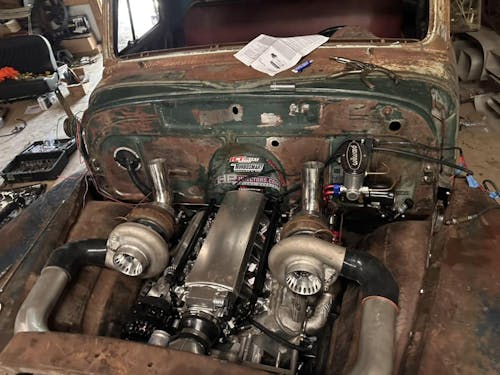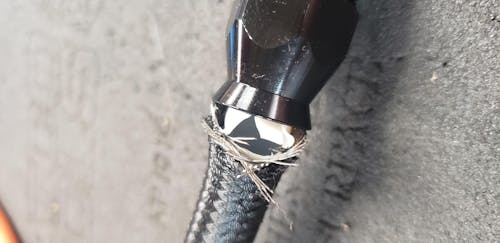UNDERSTANDING OIL CATCH CANS: PROTECTING YOUR ENGINE FROM HARMFUL BUILD-UP
UNDERSTANDING OIL CATCH CANS: PROTECTING YOUR ENGINE FROM HARMFUL BUILD-UP
Who doesn’t want optimal engine performance and longevity? All car owners aspire to keep their car engines tip-top. The purpose of an Oil Catch Can is to act as a protective barrier between the crankcase and intake system of the car engine. It’s a plus if the Catch Can is baffled and comes with a breather and a valve- all for easy use and efficient cleaning.
What is an Oil Catch Can?
An Oil Catch Can that often comes with an Oil Catch Can Kit is a simple device that is technically an oil/air separator. It catches the fuel debris before it can reach the intake. The vaporized oil droplets are separated from the air/oil mixture coming from the crankcase and then collected into the Can. Clean air exits the output and continues to the intake, preventing contamination from reaching that part of the engine. The oil collected may be reused or disposed of.
How Does Oil Get into the Intake System in the First Place?
A positive pressure builds inside the crankcase as a result of internal combustion from the engine, known as Positive Crankcase Pressure, which is relieved through the hose. The pressurized air leaves the combustion chamber and passes beyond the piston rings. The same oil that keeps the piston rings spinning with the least friction is partially vaporized. The problem arises when this vaporized oil and other contaminants also enter intake along with air through the hose, causing accumulation. This ends up affecting fuel economy and horsepower. This may even cause a misfire.
Mechanism of a Catch Can
In order to prevent fuel debris from building up inside the intake, the Catch Can is plugged into the hose line that runs from the engine’s crankcase to the intake. Through a tube, the air is forced into the catch can’s bottom, where it is filtered and then redirected toward the outlet and top of the can. A hose is attached to the output to complete the circuit and then reconnected to the air intake port. Any oil particles are retained in the filter element of the catch can filter as air flows through it, pooling into larger droplets before they fall into the catch can’s bottom. The oil from the can needs to be removed periodically.
Top Selling Catch Can Kits and What Each Kit Contains
Listed below are a few top-selling kits:
⦁ 300ML Evil Energy Aluminum Oil Catch Can
The product comes in various colors, including black, silver, red, and blue. It has a dipstick to monitor the fluid level without opening the can. The cleaning system also includes some stainless steel wool to collect additional oil.
⦁ 300ML Evil Energy Oil Catch Can With Breather Filter

The Catch Can Kit can be chosen according to the customers’ color choices: black, silver, red, and blue. It has a dipstick to check the fluid level. Furthermore, the decontamination system includes stainless steel wool to gather extra oil for more efficient cleaning.
⦁ Evil Energy 10AN Baffled Oil Catch Can Oil Breather Tank With Valve 750ML Universal

The product comes in the colors black and silver. Its components include a Drain plug, Inlet/Outlet, Bracket, Breather Filter, and Hose Clamp. The additional advantage of drain valve with the bottom pressure relieve valve thread size 3/8 NPT makes this oil catch easier to clean and reusable. The Bracket design makes it more convenient to install.
Benefits of Using Evil Energy Products
⦁ Universal: Most cars may use it as long as there is sufficient space for installation.
⦁ Size: Hose length is 31.5in / 0.8m, hose ID:3/8", hose OD:2/3". The thread of the inlet and outlet is M16*1.5. While the Breather catch can volume is 750ML, the Fittings thread size of 10an is 7/8-14 UNF.
⦁ Warranty: EVIL ENERGY products come with a 3-month warranty.
⦁ Baffled: After disassembling the baffle in a rotational motion, the surface area of steam condensation may be increased, and oil can be caught more successfully by adding the right number of steel balls.
⦁ Breather Filter: For cars without PCVs, you have the option to install the oil catch can as a seal can in line with the PCV hoses or as a ventilation system.
⦁ Drain Valve: Making the product easier to clean and re-use.
Key Takeaway
Whether one should get an oil catch can kit or not, its efficiency and usefulness are up for debate. Even though the design of oil catch cans has a big impact on how well they function, it’s always better to be careful than sorry. You might want to consider installing one on your own car and see for yourself how the engine’s efficiency can go from deteriorating to becoming up-to-the-mark, all with the help of this one product purchase.


![EVIL ENERGY 4/6/8/10AN PTFE Fuel Line Kit | E85 Nylon Braided Hose | 16/20FT Black Black with Comprehensive Fittings [20FT]](http://www.ievilenergy.com/cdn/shop/files/Test-2025-Evilenergy-125598065_165x.png?v=1742144807)
![ptfe hose fitting kit [16FT]](http://www.ievilenergy.com/cdn/shop/files/Test-2025-Evilenergy-125598171_165x.png?v=1742144807)
![CPE Fuel Line[25FT]](http://www.ievilenergy.com/cdn/shop/files/25FTCPE_FuelLine_165x.png?v=1735220649)
![CPE Fuel Line[20FT]](http://www.ievilenergy.com/cdn/shop/files/20FTCPE_FuelLine_165x.png?v=1735220649)















